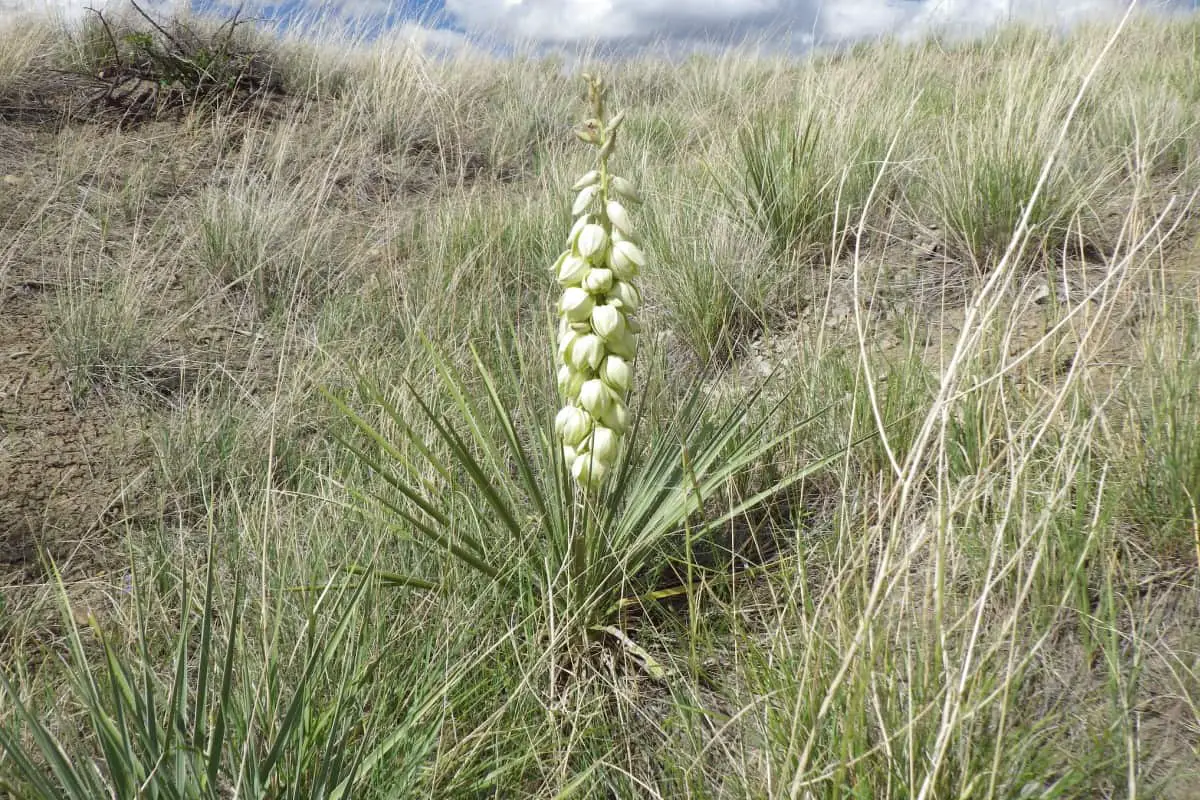Yucca plants can grow in colder climates, like most of Canada, as long as they have enough sunlight and water. They may not be as lush and green as they would be in a warmer climate. With a little bit of care, your yucca plant will thrive in certain parts of Canada.
Yuccas can grow in Canada, specifically in the southern portions of Ottawa, Quebec, Alberta, Ontario, and British Columbia. These areas are typically in hardiness zones 5-7, which allow many species to survive in conditions. Native Soapweed Yucca grows wild in parts of Alberta and Saskatchewan.
The species of Yucca found in Canada must be able to withstand long, cold winters and short, humid summers. They also must be capable of withstanding drought conditions. This article will explore what species of Yucca can grow in certain parts of Canada and what conditions they can withstand.
What Kind of Yucca Grows in Canada?
While you may not be able to grow all species of Yucca in Canada, many will do just fine. With the proper care, your Yucca plant can thrive and provide you with years of enjoyment.
Yucca Glauca, or soapweed yucca, grows wild in Alberta and Saskatchewan in Canada. Still, other species like Yucca Filamentosa are hardy enough to survive the cold Canadian conditions but are not native to the area.
Native Soapweed Yucca (Yucca glauca) is a beautiful, hardy plant that grows in the wild across much of Canada. It’s an evergreen with long, sharp leaves and large white flowers. Soapweed yucca is a popular landscaping plant because it’s low-maintenance and drought-tolerant.
Soapweed’s natural distribution extends throughout the Great Plains, from Texas north to Alberta. It grows in various habitats, including grasslands, open woodlands, and even on rocky hillsides. Despite its tough nature, soapweed yucca is not indestructible. Yucca Glauca grows up to 4 and a half feet tall, with white flowers blooming along with a tall vertical spike.
In winter, your Yuccas for zone 5 must withstand temperatures of -10 to -20 degrees Fahrenheit. It must also withstand snow and ice. Though they’re not native to the area, Yucca Filamentosa can survive these conditions and grow tall and flower annually.
Yucca Filamentosa, also known as Adam’s Needle, grows between four and eight feet tall and has a similar flower pattern to Soapweed. This species can survive temperatures up to -20 degrees Fahrenheit in the winter, making it ideal for surviving in Canadian winter conditions.
Yuccas can tolerate snow by going into a dormant state. This means they will not grow or flower, but they will not die either. As soon as the weather warms up and the snow melts, your yuccas will start growing again.
During the summer, your Yuccas for zone seven must withstand temperatures of 95-100 degrees Fahrenheit. They should also be able to tolerate high humidity levels. While yuccas can tolerate a wide range of conditions, some are better suited for growing in Canada.
The species of Yucca found in Canada must be able to withstand long, cold winters and short, humid summers. The Yucca Filamentosa and Glauca are capable of withstanding these conditions and still produce flowers annually.
Hey, you might like this one: What Soil is Best for a Yucca
Are There Yucca Moths in Canada?
Yucca moths play an essential role in the life cycle of yuccas. They are responsible for transferring pollen from the male flowers to the female flowers, allowing for fertilization and seed production.
Yucca moths are found in very few parts of Canada, in just the very southern parts of Alberta and Saskatchewan. The moths are native to the Southwest United States and are attracted to the flowers of the Yucca plant and pollinate them as they feed on the nectar.
While you may not see many yucca moths in most of Canada, they are an important part of their native ecosystems and play a vital role in pollinating the Yucca plants. The moth’s larvae also feed on the Yucca plant’s seeds, but they do not cause enough damage to kill the plant. In fact, some scientists believe that without the larvae, the Yucca plants would not be able to reproduce.
In Canada, Yucca plants reproduce both sexually and asexually. When yucca moths are available, they pollinate the yucca plant, but, Soapweed, or Yucca Glauca, is also capable of asexual reproduction.
How Do Yucca Reproduce in Canada?
Yucca reproduction in Canada is a bit different than in the United States. In the US, the Yucca plant can reproduce through seeds that are spread by the yucca moth.
In Canada, Soapweed reproduces entirely asexually, and only a few seedlings are able to establish themselves. Sexual reproduction presently adds little to population persistence though it is crucial for the mutualism with yucca moths’ survival.
Because Yucca moths are only present in two places in southern Canada, Soapweed in Alberta has evolved to be capable of self-pollination. This means that the plant can produce seeds without the help of the Yucca moth. However, self-pollinated Soapweed plants produce fewer seeds than those that are pollinated by the moth. Yucca plants reproduce asexually by cloning themselves. New plants will grow from sections of the stem or root of the parent plant. This is an easy way for Yuccas to spread in Canada, as new plants will quickly take root and start growing.
The Alberta population of Soapweed has been declining for several years, and scientists believe that this is due to inbreeding caused by self-pollination.
Hey, you might like this one: Can You Cut the Top Off a Yucca
Conclusion
The best species of Yucca for growing in Canada are the Filamentosa and Glauca, which can still produce flowers annually despite harsh conditions. While you may not see many yucca moths in Canada, they play an important role in the life cycle of Yucca plants by pollinating the flowers and spreading pollen.

